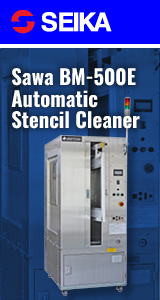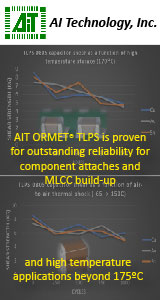|

|
|
| Ask the Experts | |||||||
|
|||||||
|
March 5, 2012 - Updated February 26, 2012 - Originally Posted Black Land Edges
A.V. |
|||||||
| Expert Panel Responses | |||||||
|
Couple of questions.Does the black material clean off? What type of preheat are you using?Solder and flux type?I'd be happy to help as I can but I'll probably need to get a bit deeper intothe process.
President R&D Technical Services Inc. David is President at R&D Technical Services, a vapor phase reflow oven manufacturer. he has 20 plus years experience in the vapor phase reflow industry.
I'll make the assumption that the Ni-Au finish is ENIG, meaninga very thin Au layer, less than 6µin. I can think of two scenarios that mightlead to the localized black color:
Process Engineer Astronautics Fritz's career in electronics manufacturing has included diverse engineering roles including PWB fabrication, thick film print & fire, SMT and wave/selective solder process engineering, and electronics materials development and marketing. Fritz's educational background is in mechanical engineering with an emphasis on materials science. Design of Experiments (DoE) techniques have been an area of independent study. Fritz has published over a dozen papers at various industry conferences.
Thegold at the edge of pads and at through hole can be substantially thinner thanover the rest of the pad. This would be very difficult to see in an x-sectiondue to the extremely thin plating thickness. The black color is probably thenickel oxidizing after the reflow process.
Global Product Champion Henkel Electronics Richard Boyle is a Global Product Champion at Henkel Electronics. He has over 25 years experience in the electronics assembly industry and is responsible for the global technical service of all of Henkel's solder materials.
|
|||||||
| Submit A Comment | |||||||
|
Comments are reviewed prior to posting. You must include your full name to have your comments posted. We will not post your email address. |
|
Free Newsletter Subscription
Circuitnet is built for professionals who bear the responsibility of looking ahead, imagining the future, and preparing for it. Insert Your Email Address |
|

|






